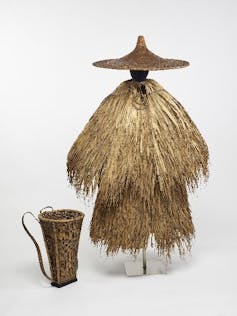Key Takeaway
The British Museum’s China’s Hidden Century exhibition focuses on details of daily life in the 19th century, including ornaments, clothes, and artefacts. The exhibition highlights the deteriorating domestic and international situation, such as the Taiping and Nian rebellions, starvation, and violent encroachments by the British and other European and Asian countries. The exhibition also highlights the fact that China finally became accessible to the outside world, with international trade restricted to the southern port of Guangzhou. The exhibits also highlight the dominance of the Manchu minority, a group that dominates the 400 million-plus population of the Han people. The exhibition covers Qing China (1644-1912), political culture, and the rise of global China, with a small room on its sudden demise. The exhibition’s level of detail makes China’s hidden century more accessible, but it requires imagination to fully understand the culture and its impact on the world.
The face of the British Museum’s big summer show, China’s Hidden Century, is that of an elderly woman wearing jade earrings, dressed in a blue robe with ornate gold embroidery decorating its collar.
It is an image painted, we discover in the exhibition, by an unidentified artist in the Guangzhou area around 1876, as one of a pair. Lady Li is her name. Her husband, Lu Xifu, appears in the other image. All the information about them is contained in the script above the portraits. She managed the family household. He was a businessmen. That’s pretty much all that is known.
Making the vast sweep of Chinese history human and accessible has never been easy, particularly for non-Chinese audiences. The approach of China’s Hidden Century is to focus on details – on ornaments, clothes and artefacts – the sorts of things that figured in daily life in the 19th century.
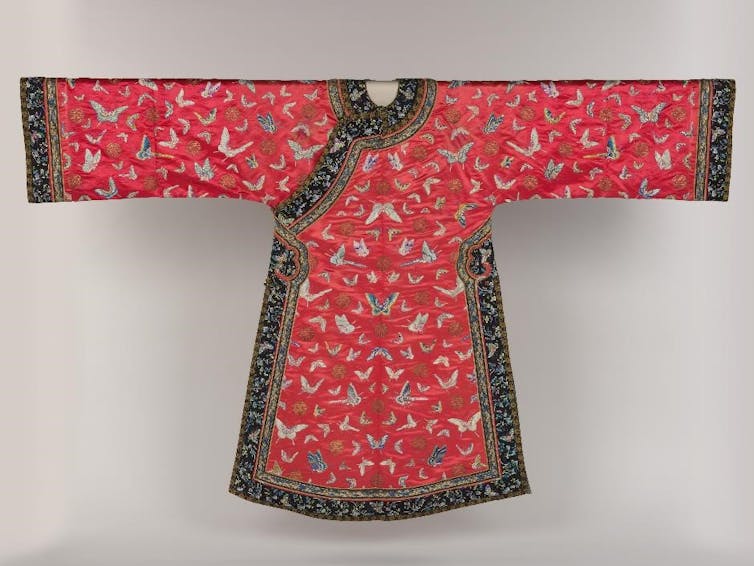
A country in flux
The China of that century was undergoing the painful, often violent and tragic convulsions of change. The golden era of the three great Qing emperors – Kangxi, Yongzheng and Qianlong – which lasted almost a century and a half, was over. Under increasingly weak figures, (prominently portrayed at the start of the exhibition), China’s domestic and international situation deteriorated.
It experienced the horrific Taiping and Nian rebellions mid-century, starvation in the 1870s and violent encroachments by first the British and then other European and Asian countries. This period is not, therefore, remotely “hidden” in the consciousness of modern China, but figures as a crucible of pain, humiliation and victimhood. Despite all of this, life very much went on.
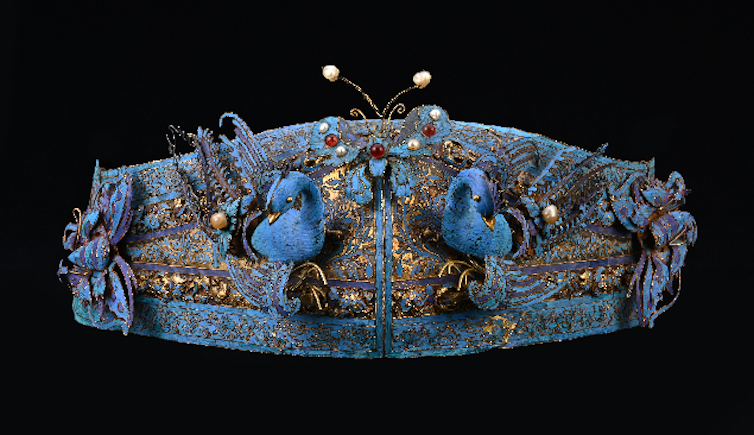
Ironically, plenty of the exhibits bear witness to the fact that the 19th century, far from a period of obscurity, was the time when China finally became accessible to the outside world. Up to the 1840s, international trade was mostly restricted to the southern port of Guangzhou.
The rest of the county was closed off, forbidden to travellers. There is a splendid painting of the various factories along the Pearl River in the city, the busy waterway teeming with vessels. The sheer density of water traffic was something that British commented on when they first caught sight of this place in the 17th century.
But through the first and second Anglo-Chinese War, China, facing huge international coercion, reluctantly opened up. That gave birth to the modern discipline of sinology – the study of Chinese language and culture.
At that time many observers were intrigued by how less than half a million of the Manchu ethnic group (from Manchuria in north-east China) were able to dominate the 400 million-plus population of Hanpeople, the country’s largest enthnic group. This fact remains an anomaly to this day – for a quarter of the last millennium, China was under minority control, a form of subjugation that gets glossed over in history textbooks within the country, but stands out starkly in the very different language, social habits, clothing and customs of the dominating Manchu minority.
From imperial to global China
Wandering through the various display rooms, visitors get to appreciate the logic of the framework with which the curators have tried to assemble the rich holdings of the British Museum and the other exhibits borrowed from more than 30 institutions.
First, there is an indication of the sheer size of Qing China (1644-1912) – expanded to embrace today’s Mongolia and the annexed territories of Xinjiang and Tibet, through a map at the entrance.
After this comes coverage of the political culture – the grafting onto Chinese imperial power structures of Manchu habits and customs. The figure of the Empress Dowager Cixi looms large here, the true power behind the throne, dominant from soon after 1861 to her death 50 years later. But she was a woman caricatured and wilfully misunderstood both by contemporaries and those who came afterwards.
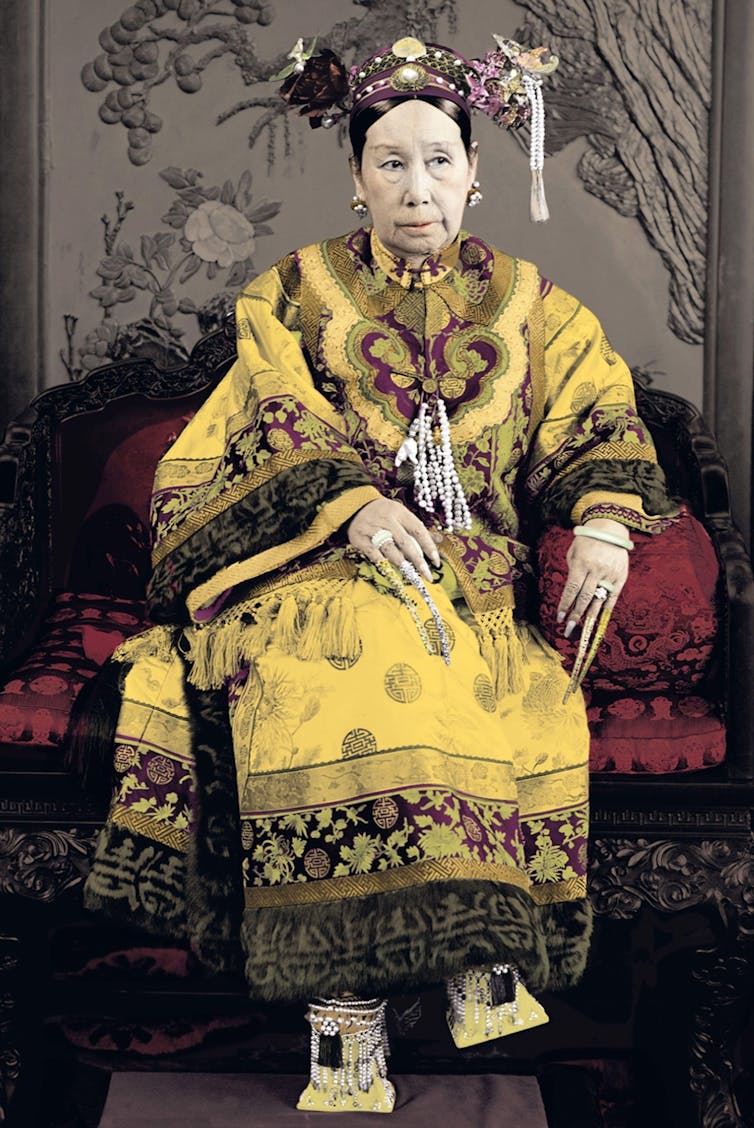
At the centre of the display rooms is a large space devoted to normal everyday life. This attempts to address what life was like over this period for the 90% of people who lived in rural areas, and whose lives consisted of subsistence farming, and were mostly confined to the places they had been born.
Finally, there is coverage of global China, and a small final room on its sudden, but not unexpected demise. This was the result of what was initially a military uprising in Wuhan in late 1911 that became a full insurrection by early 1912.
When so much history is covered, it is unsurprising that it is very specific, individual elements that have the most impact, because they, at least, are immediate and accessible.
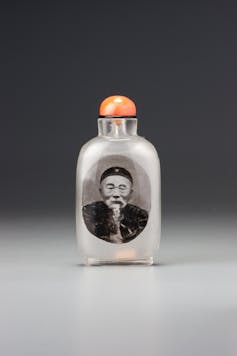
Footage of French-trained Yu Rongling doing a Chinese-style dance in front of some ancient buildings in Beijing in 1926 is elegant and haunting. So too is the Eight Leaves of Insects and Flowers by Ju Lian from the latter part of the century. Delicate and understated, it is the sort of aesthetic statement that intrigued outsiders trying to familiarise themselves with Chinese culture.
The costumes throughout are splendid, dramatic and colourful. Just how much this level of detail makes China’s hidden century more knowable is a moot question. It takes a huge effort of imagination to try to feel what this culture was like to an outsider, and even more to think about what it might have looked like from within.
But this is a bold, ambitious and imaginative effort for which the British Museum should be applauded. The Qing dynasty and its demise has become a little clearer and a little less concealed; that is no easy thing to have achieved.

